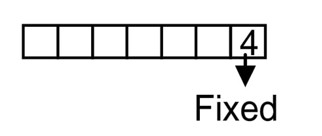8. An experiment consists of recording boy–girl composition of families with 2 children.
What is the sample space if we are interested in knowing whether it is a boy or girl in the order of their births?
What is the sample space if we are interested in the number of girls in the family?
8. An experiment consists of recording boy–girl composition of families with 2 children.
What is the sample space if we are interested in knowing whether it is a boy or girl in the order of their births?
What is the sample space if we are interested in the number of girls in the family?
-
1 Answer
-
8. Let us denote boys and girls by B and G.
(i) The desired sample space whether a boy or girl are the children according to their birth.
S = {BB, BG, GB, GG}
(ii) A family of two children can be two girls, one girl or no girl. So, the desired sample space is S = {0, 1, 2}
Similar Questions for you
3, 4, 5, 5
In remaining six places you have to arrange
3, 4, 5,5
So no. of ways
Total no. of seven digits nos. =
Hence Req. prob.

f (x) = x? – 4x + 1 = 0
f' (x) = 4x³ – 4
= 4 (x–1) (x²+1+x)
=> Two solution
Let z be equal to (x + iy)
(x + iy) + (x – iy) = (x + iy)2 (i + 1)
Equating the real & in eg part.
(i) & (ii)
4xy = -2x Þ x = 0 or y =
(for x = 0, y = 0)
For y =
x2
x =
=
of
=
When
gives c = 1
So
sum of all solutions =
Hence k = 42
Each element of ordered pair (i, j) is either present in A or in B.
So, A + B = Sum of all elements of all ordered pairs {i, j} for and
= 20 (1 + 2 + 3 + … + 10) = 1100
Taking an Exam? Selecting a College?
Get authentic answers from experts, students and alumni that you won't find anywhere else
Sign Up on ShikshaOn Shiksha, get access to
- 65k Colleges
- 1.2k Exams
- 679k Reviews
- 1800k Answers
